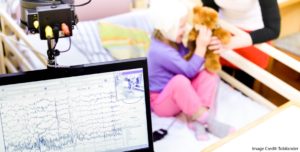At a professional development talk on long-term memory formation, a teacher politely scolded me: I should have spent more time discussing alpha waves and gamma waves.
After all, she said, that was the really important stuff when it came to brains and learning.
Of course, the differences between alpha and gamma waves can fascinate us. And, pictures of various graphs can look dramatic — especially if the graphic designer has made the colors particularly attractive.
And yet, this kind of neuroscience information offers almost no useful guidance to teachers.
Here’s why.
What Should Teachers Do?
Pretend for the moment that we can plausibly say “this brain region shows gamma waves when it is learning, and alpha waves when it isn’t.”
(By the way, we almost never can say that plausibly. But, we’re pretending here.)
What should teachers do with that information?
Presumably we should ask: how can we reduce alpha waves and enhance gamma waves?
The answer to that question will always include a particular teaching practice. We should use retrieval practice. Or, we should space out repetitions. Or, we should reduce working memory load.
In every case, we know about the effectiveness of those teaching techniques by studying psychology, not neuroscience.
We can, of course, see changes in brain activity when use various classroom techniques.
But, we can determine their effectiveness only by measuring some behavioral outcome. Did the students do better on the test? Did they pay more attention to the stimulus? Or, did they demonstrate higher working memory scores? In every case, those are psychology questions.
Today’s News
I write about this topic every few months, because confusion between the two disciplines crops up fairly regularly.
For today, I want to highlight a blog post over at the Learning Scientists, where they’ve gathered several resources to explore this distinction.
Some of their resources explore the topic in a general way. The final link leads to a hot topic indeed: Daniel Willingham and Daniel Ansari challenge Jo Boaler and Tanya Lamar’s interpretation of neuroscientific data.
If you’ve been following debates about prior knowledge and math teaching, grab some popcorn and surf on over to that link.




